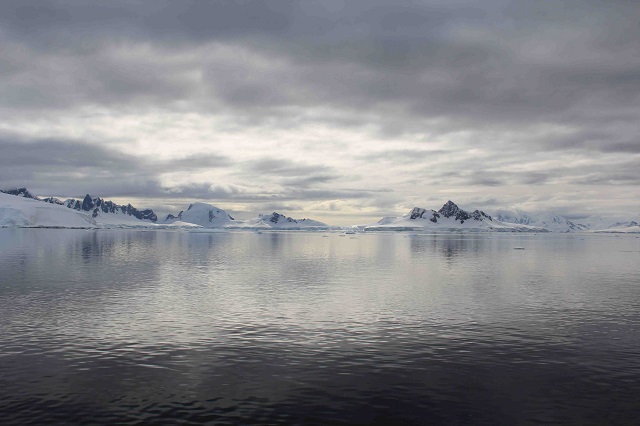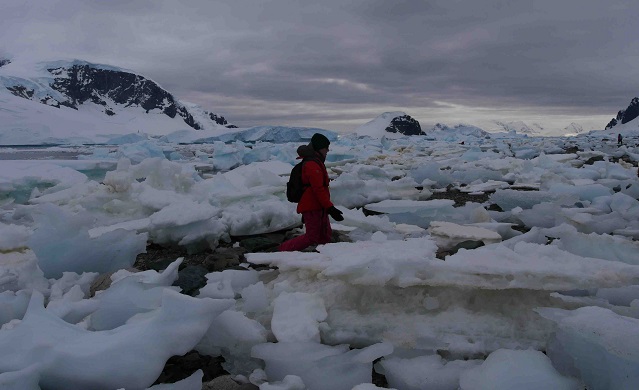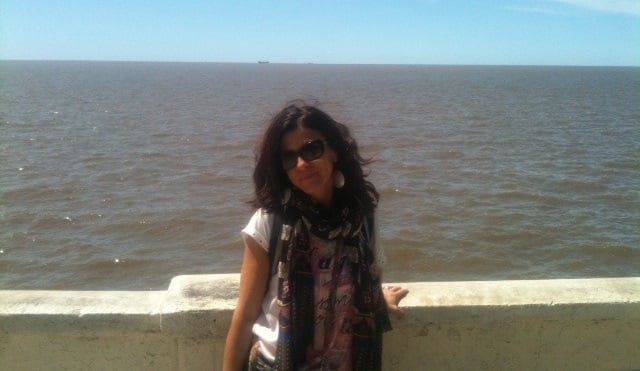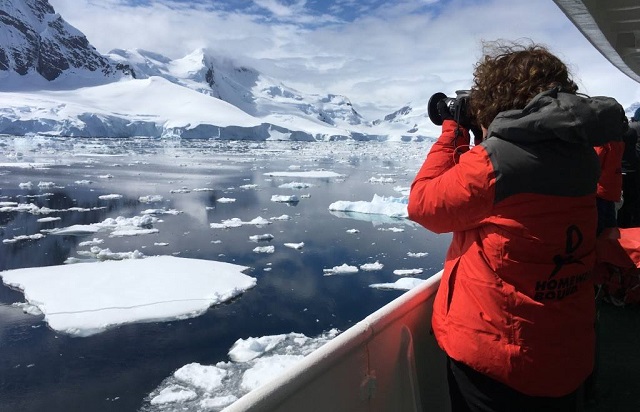“I think going to Antarctica is more exotic and exciting than going to Mars,” says Joli.
“I fell in love with the idea of Antarctica as a child, when I had a world map in my room and I dreamed of becoming the queen of a region there known as Dronning Maud Land, claimed by Norway.”
While she won’t quite achieve her dream of ruling over the region, Joli will get the chance to explore the continent during a three-week expedition next year. The Homeward Bound initiative will see a group of scientists carry out research on the effects of climate change, and the project also aims to strengthen the influence of women in the STEMM (Science, technology, engineering, medicine and mathematics) fields.
Elena Joli. Photo: Private
Joli she says she only applied for the initiative “by chance” after a friend mentioned it to her.
“I’m not a polar scientist, nor an Antarctic specialist, nor a marine ecologist… I’m a woman with an interdisciplinary scientific background,” she explains. “But I think in the end this was part of why they chose to bring me on board.” The team will include people of diverse backgrounds in the sciences, from astronomers to social scientists, and Joli believes it will lead to new collaborations between those involved.
READ ALSO: First Italian woman prepares for space
Her own passion for the sciences started young, when her father would challenge her and her sister with logic puzzles and told “beautiful stories” about the origin of the universe. This prompted her to study sciences at university, focusing on physics and the science of black holes in particular.
After studies in Bologna, Paris, and Trieste, she now teaches at a high school as well as working with publishing houses and magazines to create educational materials. Her students were a big part of her motivation to undertake the voyage.
“Every day I work with young people who ask questions about the environmental change and the state of our planet – which is in their hands. They need to be educated to work toward a sustainable future, and I believe we can only really teach what we have experienced,” says the physicist.

Wilhelmina Bay in Antarctica. Photo: Homeward Bound
Antarctica was chosen as the backdrop for the Homeward Bound project because it is one of the places on earth where global warming is happening fastest, and where climate change is already having an easily observable negative impact.
“Studying Antarctica and the Southern Ocean provides critical insights into global-scale climate change, and the influence of human activities on environmental change,” Joli explains.
The days on board the ship will begin with a morning yoga class, followed by time at the science stations at different parts of Antarctica. In the afternoon, the scientists will take part in training sessions both on climate change and on leadership in STEMM.
“What excites me most is what scares me most: I want to get out of my comfort zone,” says Joli.
But there’s one aspect of the trip that does make her nervous: “We’ll be spending three weeks on the ship, and I suffer from sea-sickness!”

An image from the 2016 expedition. Photo: Homeward Bound
The Antarctica expedition will be the culmination of a year-long initiative, aimed at arming the participants with training in leadership and strategy within STEMM. Joli says she that while she has never personally experienced discrimination working in the STEMM fields, she is passionate about encouraging more women to work in the field – and supporting those who already do.
“I think that science has for a long time “worn trousers”, to borrow an expression from a book by Australian physicist and science writer Margaret Wertheim,” she explains.

Elena Joli. Photo: Private
“Currently women are under-represented in science and in leadership positions, which is a problem. Diverse research teams with an equal gender balance are known to solve problems more effectively and work more efficiently.”
READ ALSO: Italian architects can now use the profession's female form – here's why that matters
“Women and men are absolutely equal regarding the possibility to build and develop scientific skills and expertise, in my opinion. But in a lot of occasions during my life and work activity, I have found women more inclusive and collaborative, and in my opinion, these assets will make a real difference to the sustainability of our future,” says Joli.

Biologist Shelley Ball pictured during the 2016 expedition. Photo: Homeward Bound
Getting more women involved in the sciences will not only be of benefit to the sector as a whole, but to the individual women too. According to figures from the National Science Foundation in the US, in the coming years, 80 percent of jobs will require maths and science skills, making it essential that women are trained in these areas.
“The first 'prejudices' are formed in school,” says Joli. “I think stereotypes are still very strong, especially in Italy where, according to one recent report about women in science, almost 70 percent of people interviewed (higher than the European average) said that women do not have the skills necessary for a career in science.”
“In high school, the numbers of boys and girls studying science are almost equal. But later on, women are less encouraged than men to do scientific studies, so there are many more men than women studying science at university, and working in science faculties.”
The Homeward Bound initiative, launched by Australian leadership activist Fabian Dattner and scientist Jess Melbourne Thomas, aims to create a global network of female scientists and support them in improving their leadership and strategy skills.
“Our planet and our society need women in STEMM fields more and more,” says Joli. “My advice to girls is not to be afraid of asking questions – keep your curiosity alive.”
NOW READ: Six inspiring Italian women who changed the world


 Please whitelist us to continue reading.
Please whitelist us to continue reading.
Member comments